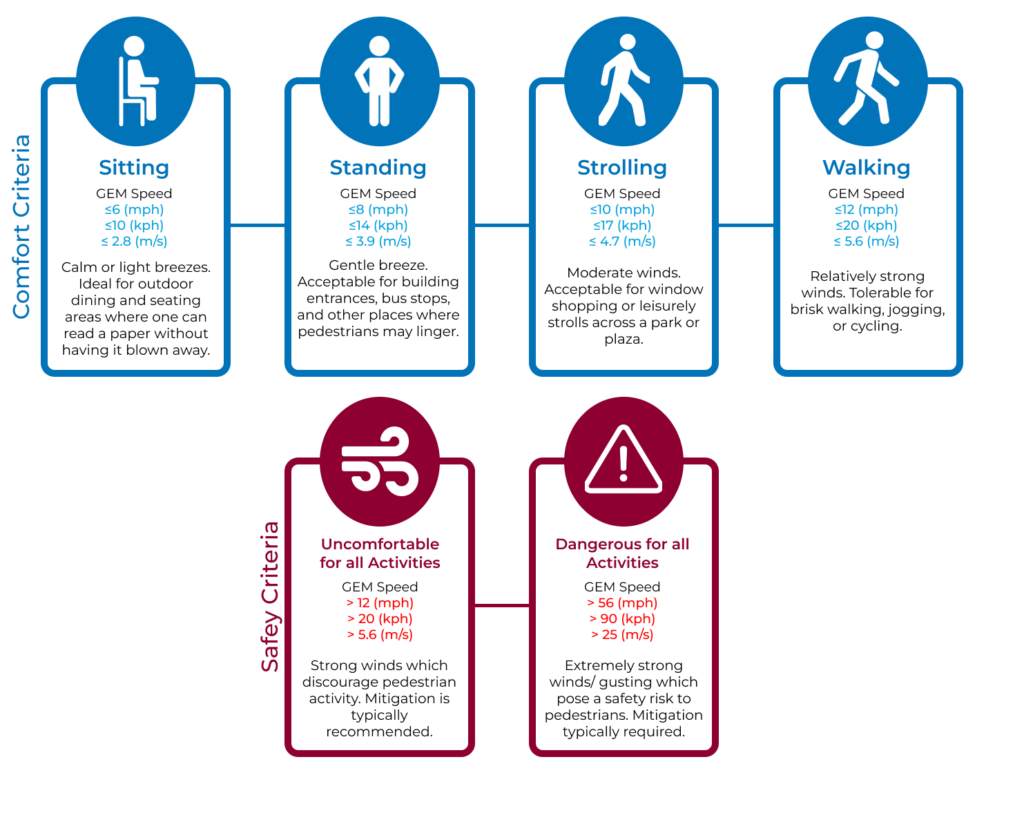The RWDI Criteria is a pedestrian wind comfort criteria developed by RWDI in the 1970’s to assess the predicted comfort and safety of pedestrians in outdoor spaces. These criteria have been widely accepted by municipal authorities as well as by the building design and city planning community.
In general, strong winds and wind gusts can negatively impact the pedestrian experience and may even pose a safety risk. Pedestrian Wind Comfort Criteria aim to classify different areas by the activities pedestrians may tolerate under predicted wind conditions. In essence, pedestrians can tolerate different strengths of wind depending on their activity. A runner, for instance, may tolerate or even enjoy a moderate breeze; on the other hand, diners enjoying a meal on a patio may find that those same winds detract from their dining experience.
RWDI’s Wind Criteria characterizes wind conditions by the Gust Equivalent Mean (GEM) – a measure that calculates an adjusted wind speed based on average wind speeds (steady-state) and wind gustiness (spontaneous), rather than average speeds alone. Comfort categories are defined such that the GEM must remain below the category threshold at least 80% of the time (see table below). These criteria are the result of decades of research and consulting and are widely accepted by municipal authorities.

Analysis Criteria – Supplemental Information
- Hours of the Day: 06:00 – 23:00
- Seasons: May – October (Summer) || November – April (Winter)
- Allowed Exceedance (Comfort): 20%
- Allowed Exceedance (Safety): 0.1%
Want to speak to an Expert Wind Consultant?